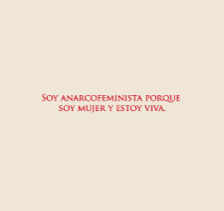Walking together: For them and for us
In collaboration with Mason Exhibitions, Arlington. George Mason University
November 4 - February 19, 2021
Artists
With the support of:
Walking together: For them and for us
Walking together; taking art as a social tool for transforming reality, opens its way to a creation committed to the feminist agenda and as a reaction to the escalation of violence against women.
Because the personal is political, Walking together brings together a group of artists from Latin America whose work denounces violence against women and the perpetuation of hegemonic models where the subjugation of women becomes the norm.
Half of the population lives in fear of walking alone; there is still room for everyday discriminatory discourse and gender violence is the leading cause of death for women aged 15 to 44 worldwide, according to the UN, which puts this ahead of deaths caused by cancer, traffic accidents or wars.
This exhibition is about women walking together in sorority.
Walking together, it is for them, those who no longer have a voice and for us, those who continue in fear, but also in the daily struggle. The story is told by its protagonists; but that does not always happen - many of them are gone, they disappeared and they cannot recount it.
This group of artists unites to become a channel that helps to converse and continue to place alerts on the pain of others. In addition, it places the tílde on the transversality and strength of feminism and the will to recover the integrity of the feminine. Gender violence is intersectional and collective; it affects and strikes all social classes, races, ages, nationalities, places in the world, ethnic groups, and generations.
Femicide does not discriminate and is redefined from a complicit silence and a great absence of empathy on the part of society.
Walking Together emphasizes art as a socio-political tool and takes it out of its most traditional spaces and themes, thereby opening a new option for a cultural landscape. Where does art end and activism begin? At what point does activism become art?
In a world where the normalization of the death, aggression against, and rape of women prevails, this group of artists unites through photographs, paintings, performances, and sculptures to talk about the social and patriarchal construction of hate crimes against women, for the very fact of being it and how the established and accepted impunity determines it.
An exercise in criticism of a patriarchal socio-political system from an art perspective.
Gabriela Rosso
This exhibition is available thanks to the support of George Mason University.


























